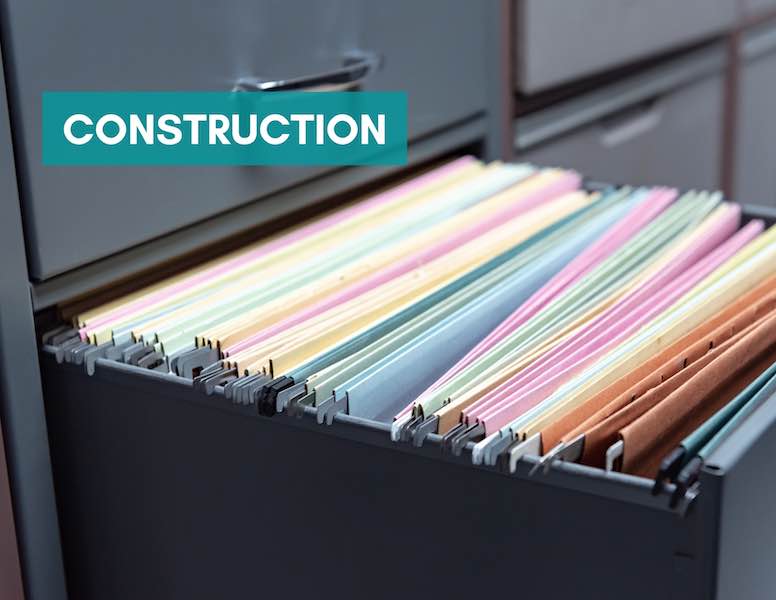Tips for Construction Contractors: Best Practices in Document Management
by Nicole Lee Sin Yee & Chris Ng Shuet Yee ~ 3 October 2021

Nicole Lee Sin Yee
Chris Ng Shuet Yee
There is an overwhelming amount of business communications occurring on a daily basis in the construction industry.
These communications could be in written or oral form, ranging from formal letters, documents or emails to simple conversations over the phone, text messages or video calling. It is extremely important to record every event during the project, from commencement to completion. However, contractors often neglect the significance of keeping correspondence only to later find themselves at a disadvantage. Although the keeping and managing of correspondence may be onerous and troublesome, they act as a safeguard to the contractors’ rights when things turn sour. In the event that any dispute arises between the parties, the correspondence may be used to prove one's case.
This article discusses the best practices in correspondence management within the construction industry.
First and foremost, record every single event related to the project from the beginning, including any and all discussions before entering into a contract between the parties. After signing the contract, the contractor shall make a copy of the contract for his records before returning the original contract to the opposite party. Besides that, any variation to the terms of the contract, additional work instructions and/or variation order should also be properly recorded.
Aside from paper documents, work instructions and/or variations may be given in the following manner:
a. orally via telephone or during face-to-face meetings. In which both the telephone conversation and meeting ought to be recorded in writing and subsequently sent to parties for their approval. Upon receipt of the said document, an acknowledgment copy ought to be obtained.
b. WhatsApp messages have been recognised as admissible evidence in court when needed. Therefore, regardless of how insignificant they may appear to be at the point in time, one may want to save and store them properly to avoid losing the conversation trail over time.
Secondly, set up an efficient correspondence management system. As the project carries on, the documents and correspondence may become more voluminous. Hence, it is crucial to manage the correspondence in an organised manner. The most efficient way is to store all correspondence on one digital platform such as Google Drive. This will help the contractors save the space required to store the boxes of documents. Not only does it act as storage, but can also be used to create an organised file structure by utilising the sub-folders featured within the main folder. Further, the documents in the folders need to be labelled accordingly so that a document can be identified quickly. Contractors are encouraged to label documents according to this format [yyyy.mm.dd-Title of document] which will enable the documents to be sorted in a chronological manner. The documents must be labelled consistently to avoid confusion.
Although it may require one to take an extra step to scan and upload the documents, it will save one from wasteful hours of flipping through the bundles for a single document. The folders should be organised and named in a logical manner, with the party's name ie. [Subcontractor A], together with the documents labelled appropriately, making it easy for one to locate the document he/she is looking for [Subcontractor A-> 2021.09.26- Application for EOT]. If a dispute arises, these documents may easily be handed over to the contractor's lawyer by sending a link rather than having to send the documents one by one.
Thirdly, keep track of all correspondence throughout the project. To avoid missing out documents, it is wise to upload the documents immediately upon receiving and/or issuing them. This will also assist the parties in understanding the current progress of the project and any action that needs to be taken by the contractor or required by the contractor from the other party. This is particularly relevant when there is an allegation of delay and disputes as to the extension of time. For instance, the contractor may have received the construction drawing late, resulting in the delay of works and the contractor is required to make an EOT application justifying the same. Preparing an index (or chronology) may also help provide the contractors with an overview of all the correspondence.
All in all, a systematic record-keeping mechanism is very important to the construction industry. Another issue to keep in mind is the security of the correspondence. There are many documents that should be kept private and confidential such as pricing and the technical designs. Although storing all the documents on a digital platform would make our work easier, online documents can be leaked more easily than hard copies of documents due to the easy sharing feature of the platform. Hence, it is vital to take some safety measures to prevent the correspondence from falling into the wrong hands. One direct solution is to limit the number of people who has access to the documents.